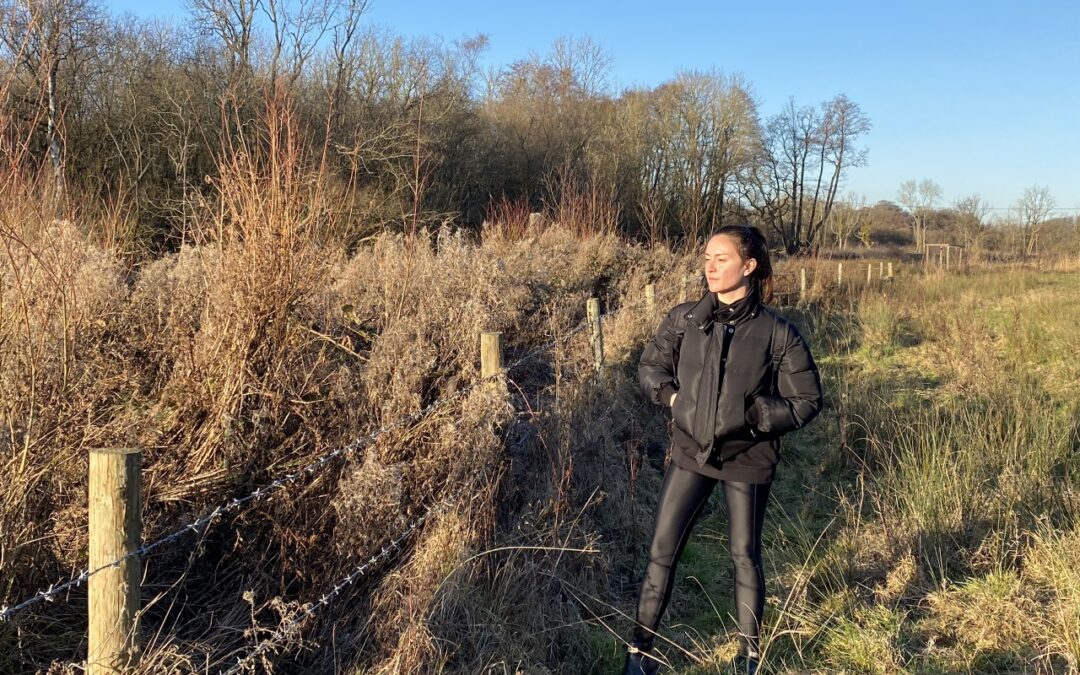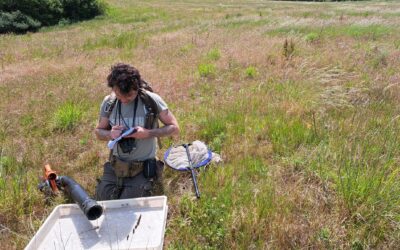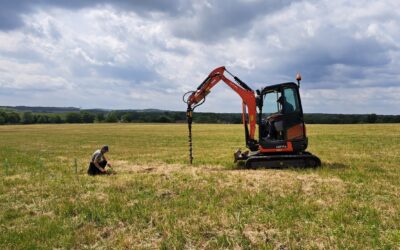The next big thing we’ll be doing at Ewhurst is wetland creation. To get an idea of what to expect, we paid a visit to Greywell Moors, a protected nature reserve managed by the Wildlife Trust here in Hampshire.
Greywell Moors is only a 15-minute drive from Ewhurst Park, but it felt like I was in a different country. In fact, looking around, I had a flashback to the time I visited Tanzania. It was really quite magical: the ponds and swampy terrain, the tall reeds and elephant grass; the air was filled with birdsong, and I was delighted to spot a pair of egrets, with their fine white plumes. I was really taken aback and left there feeling even more excited by the prospect of creating a similar landscape at Ewhurst.
Wetlands are important for many reasons. They are useful for flood control and erosion control, and they help purify water by filtering out some of the pollutants and excess nutrients that run off farmland – little wonder our wetlands have been called ‘nature’s kidneys’.

The beautiful view as the sun sets on the wetlands at Greywell Moors Nature Reserve.
And, of course, where there is water, there is life. Wetlands provide a habitat for a huge variety of species. Greywell, for example, is home to scarce plant species, including orchids, ferns, mosses and liverworts, and a recent insect survey found the site to be one of the most diverse in the country. And, as my sighting of the egrets indicated, wetlands attract a rich variety of birdlife, including migratory birds and endangered bird species, by providing opportunities for feeding, especially in the winter months.
So how do you create wetland? At Ewhurst Park, we’ve been scanning old maps and surveying the land to see where water courses formerly ran. The next step – scheduled for this April – will be to strategically dig up some of the old ponds and scrape land away from the sides of ditches so they can overflow and wet the land. Then it’ll be a case of stepping back and seeing what happens. Judging by what we saw at Greywell, we can expect an influx of life.

We hope to create wetlands at Ewhurst Park similar to those we saw at Greywell Moors.
The wetlands project is just one part of what we are doing at Ewhurst Park to create a mosaic landscape of habitats for plant life and wildlife to flourish. And it must be added that we are not doing this alone. We feel very much part of a community in the UK that is seeking to restore nature and promote nature-friendly methods of farming. It’s something we urgently need: I was shocked recently to discover that, according to the Natural History Museum, the UK is one of the most nature-depleted countries in the world. When I read that even Malaysia, my country of birth, is seeing the need to reestablish its swamps and wetlands, clearly this is a global issue.
So, we need to work together. We are firm believers in ‘Think globally, act locally’, which means that if we each do our bit in our local communities and cities, then it will benefit the health of the entire planet – our little efforts add up. It’s the same with the wetlands: re-establishing wetlands around the UK will create a network of habitats – with shorter distances for species to travel and proliferate. The more we can do, the more the planet will thank us for it.




